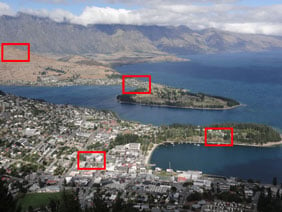Sony Cyber-shot DSC-HX5
-
-
Written by Gordon Laing
Sony Cyber-shot DSC-HX5 vs Panasonic Lumix DMC-TZ10 / ZS7 Real-life resolution (default auto settings)
Sony Cyber-shot DSC-HX5 results : Real-life resolution / Sharpness wide-angle / Sharpness telephoto / High ISO Noise / HHT / AMB
Sony Cyber-shot DSC-HX5 results : Real-life resolution / Sharpness wide-angle / Sharpness telephoto / High ISO Noise / HHT / AMB
|
|
To compare real-life performance we shot the same scene with the Sony Cyber-shot DSC-HX5 and Panasonic Lumix DMC-TZ10 / ZS7 within a few moments of each other using their best quality JPEG settings and lowest sensitivities. The lenses on each camera were adjusted to deliver the same field-of-view; the Sony crops are larger due to its lower resolution. Each camera was set to Program mode without intervention to see how they performed with default settings. See our sharpness pages for results at all apertures. |
The image above was taken with the Sony Cyber-shot DSC-HX5 at 125 ISO with an exposure of 1/320 and the lens set to 6mm f9; the original file measured 4.16MB, coincidentally virtually the same size as the TZ10 / ZS7’s file. As stated above, we allowed each camera to automatically select its own exposure in Program mode, in order to compare how they performed under default settings.
The Sony only has two aperture settings available at any focal length, and went for the smaller of the two here, selecting f9 at 1/320 rather than f4 at 1/1250 or 1/1600. The TZ10 / ZS7 has seven aperture settings at its disposal, and went for a relatively small value of f5 here.
Normally this would be cause for concern as smaller apertures on compacts often result in diffraction, and that’s certainly the case for the Panasonic here. We tested both cameras at each of their aperture settings and confirmed the Panasonic delivered crisper overall results at its largest apertures. As far as we understand it though, the Sony employs a neutral density filter to simulate its smaller aperture settings, and while this means there’s no control over depth-of-field, it should at least eliminate any concerns over diffraction at large f-numbers. We’ll look into this in more detail on our sharpness results pages, but in the meantime we’re sticking with the default automatic settings here as that’s how most of the owners of these cameras will use them.
The crops below are taken from the areas marked with the red squares and presented here at 100%. With cloud obscuring the mountain ridge, our first crops come from a lower area. There’s not a great deal of real-life detail in these hills, and across areas of tonal similarities, both cameras tend to suffer from some smearing. That said, the Panasonic has held onto the detail better than the Sony here, but this is more down to image processing than having an extra couple of Megapixels.
Moving onto the other crops, the biggest difference remains image processing rather than actual sensor resolution. The Sony has gone for a warmer but slightly softer style than the Panasonic, but in terms of actual real-life detail recorded, there’s very little in it. Pixel-peepers may notice a very slight benefit to the Panasonic in the finest building and foliage details, with the Sony again suffering from a little too much smearing, but we’d ultimately not base a decision on the minor differences seen on this page.
This is only the first of our four results pages though, and in the others you’ll be able to check the sharpness at wide-angle and telephoto settings, along with our usual High ISO Noise comparison. So onto our next results page to see how the Sony Cyber-shot DSC-HX5 performs in terms of sharpness when fully zoomed-out. Alternatively skip straight to our High ISO Noise results, or our Verdict.
PS – a quick note on the GPS accuracy: both cameras were positioned in exactly the same spot, and reported virtually identical Longitudinal positions (differing by just over one tenth of a second). Strangely though, the reported Latitudes were actually 1.5 seconds apart – see screengrabs from their respective EXIF headers below). If you enter the co-ordinates into Google Earth, the TZ10 / ZS7 seemed to be a few meters off, while the Sony was almost bang-on. Note the Sony additionally recorded altitude information, which is missing from the Panasonic implementation.
Sony Cyber-shot DSC-HX5 GPS reading |
Panasonic Lumix DMC-TZ10 / ZS7 GPS reading | |
 | ||
Reading taken from far right corner of Skyline Gondola balcony |
Reading taken from far right corner of Skyline Gondola balcony |
We also took a reading using a Garmin GPSmap 60CSx handheld unit, which after locking onto nine satellites and reporting an accuracy of +/-8 feet, reported a position of 45; 01; 35.7 South by 168; 38; 59.28 East. Entered into Google Earth, this again landed almost on top of our exact shooting location. So in this instance, the Sony reported a more accurate position than the Panasonic. The Garmin unit did however report the altitude as being 797.356m – approximately 4m higher than the Sony recording. We’ll report back if and when we can verify the true height of our shooting location.
Note we returned to the same location at a later date with the Panasonic, and this time it reported the Latitude as 45; 1; 35.95 S and the Longitude as 168; 38; 59.21 E, which is a more accurate figure. While the EXIF data in both cases reported four satellites being locked-onto, it clearly pays to wait as long as possible before taking your shot for a more accurate reading. Some other shots we took with the camera after only being on for a few seconds were also a few meters out.
Sony Cyber-shot DSC-HX5 |
Panasonic Lumix DMC-TZ10 / ZS7 | |
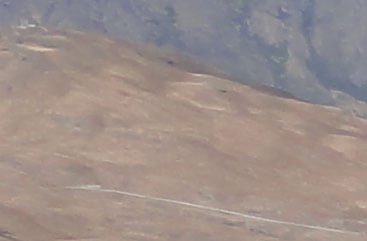 | 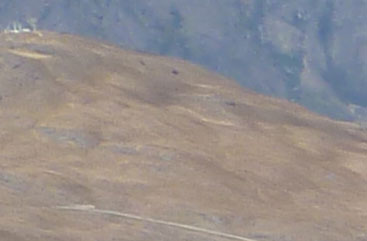 | |
f9, 125 ISO |
f5, 80 ISO | |
 | 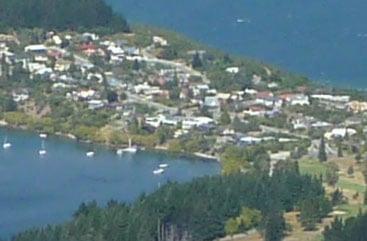 | |
f9, 125 ISO |
f5, 80 ISO | |
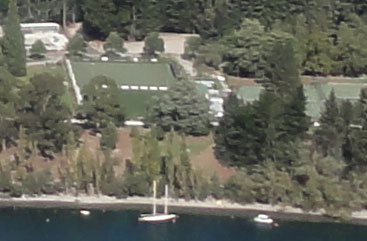 | 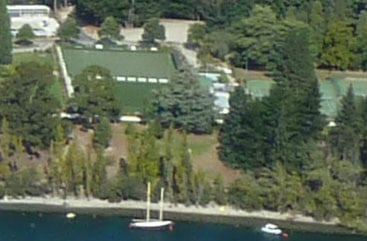 | |
f9, 125 ISO |
f5, 80 ISO | |
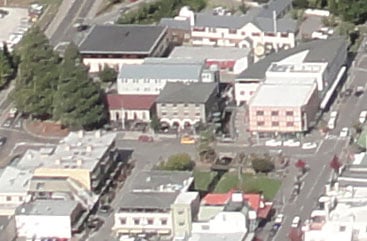 | 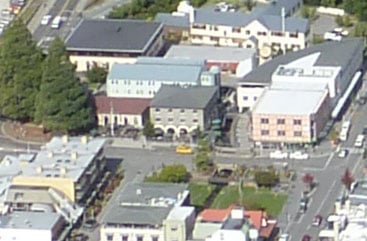 | |
f9, 125 ISO |
f5, 80 ISO |
